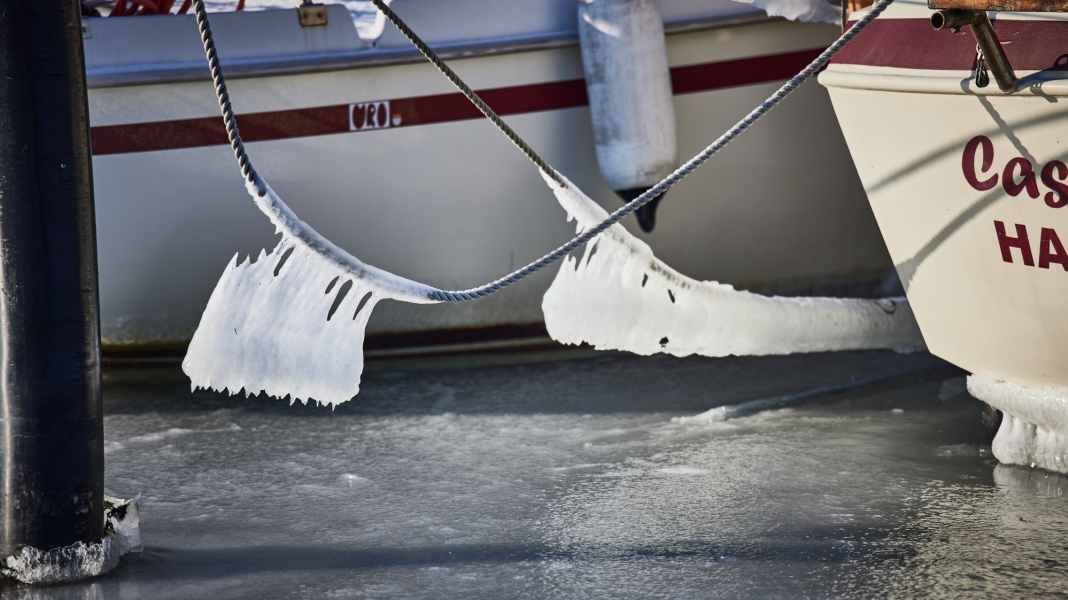
Antifreeze lifehack 1: Adapter to prevent damage to the fresh water system

Every year, the water pipes and boiler need to be drained during winter storage. In addition to using antifreeze (such as alcohol), the system can also be completely drained to prevent frost damage. It is advisable to suck out the water. The wet vacuum cleaner is connected to a commercially available flexible siphon connection hose with a diameter of 32 millimetres. For the threaded side, we ground a thread with a comparable pitch to the union nut into a 10 millimetre thick and 40 millimetre diameter plastic disc using a triangular file on the side. In the centre, the centring hole has been widened to around 20 millimetres so that a 1/2 inch double nipple can later be screwed in tightly and airtight. This creates the adapter to connect the suction cup to the water pipe.
Christian Herzog, Friedeburg
Antifreeze lifehack 2:More frost protection with laboratory accessories in the water filter
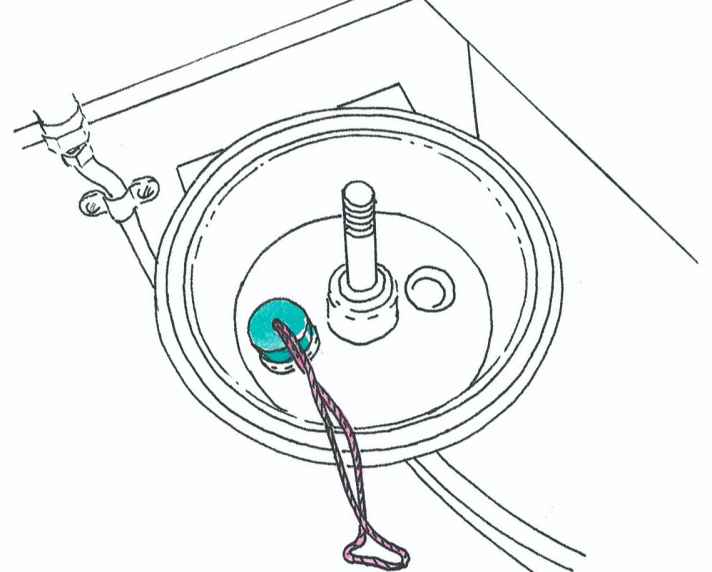
To protect the seawater cooling circuit of the propulsion engine from frost damage, antifreeze is poured into the seawater filter and the engine is left running until the antifreeze visibly emerges from the exhaust. This is best done on land, so the antifreeze can be collected aft in a bucket, or in the water, but then with a biodegradable agent. To prevent the antifreeze from leaking out of the filter through the intake hose, the sea valve must be closed. In our case, however, this is difficult to reach and the antifreeze in the piece of hose up to the seacock does not help and is therefore wasted. We therefore close this opening directly in the filter quickly and easily with a rubber stopper for test tubes when winterising. Available cheaply online or from specialist retailers.
Carsten Dubois, Gundremmingen
Antifreeze lifehack 3: Protect the engine cooling system from the cold
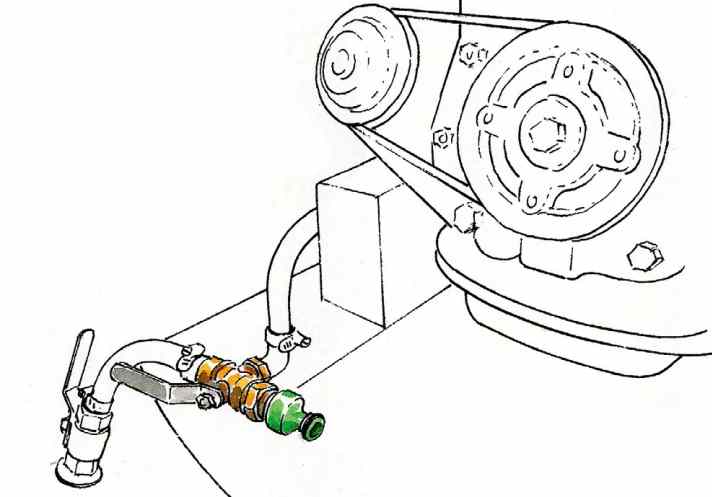
We have installed a two-way valve in the supply line to make it easier to preserve the cooling system of our engine. In the arrangement shown, the sea valve does not need to be locked - it is sufficient to connect the flushing hose and flip the lever of the two-way valve. This allows the antifreeze to run through until it exits the exhaust. Side effect: The impeller does not run dry as the water is continuously sucked in.
Jürgen Kruse, by e-mail
Antifreeze lifehack 4: Bleed valve makes the pipework winter-proof
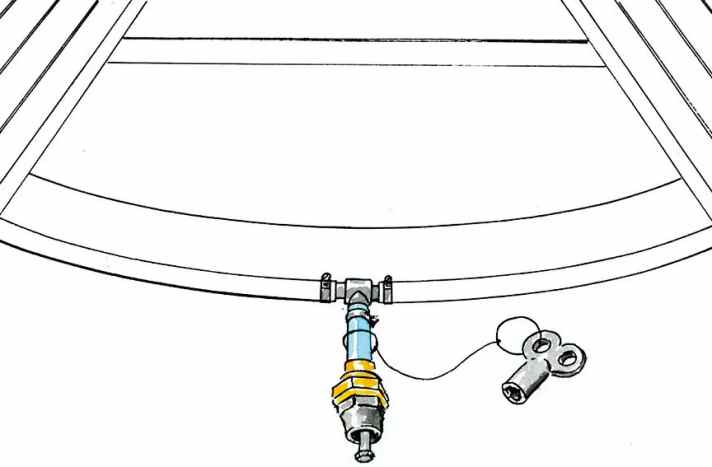
Water residue remaining in the pressurised water system can cause considerable damage in the event of frost, resulting in high costs and work. We have installed a small bleed valve from the heating system at the lowest point of the supply pipe. The appropriate square spanner is fixed in place, ready to hand. In autumn, we open the valve and let the residual water from the hose and pump run into the bilge. There it can be collected with a cloth. This way we can go into the winter without any worries.
Edgar Wallenborn, Kerpen
Antifreeze lifehack 5: Environmentally friendly trunk
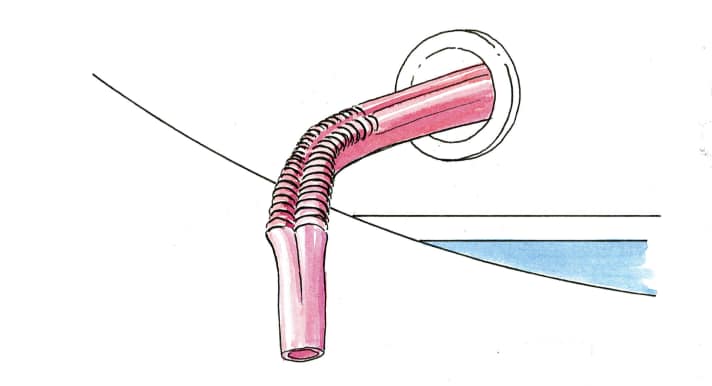
Antifreeze is important, but should not be released into the environment. That's why we use the filler neck of a petrol can to collect the liquid at the exhaust. We wrapped the end of the plastic nozzle with adhesive tape and thickened it to the correct diameter to ensure that it stays in the on-board outlet and is leak-proof. This means that the antifreeze can be collected without making a mess and stored until it is used again next autumn.
Josef Gius, Traunwalchen
This might also interest you:
Antifreeze lifehack 6: Motor flushing

When winterising the engine, we first flush the cooling circuit with fresh water and then fill it with antifreeze and anti-corrosion agent. To do this, the sight glass of the seawater filter is replaced by a Plexiglas disc of the same size, into which a brass hose connection is glued with Sikaflex. The additional hose is now used to draw fresh water and then antifreeze into the cooling system while the engine is running.
Helmut Neumann, Bad Salzuflen
Antifreeze lifehack 7: A different way of preserving

When the yacht is rolled into unheated outdoor storage and winter is approaching, it is time to clean and flush the pipes of the fresh water system with antifreeze. If this is not done, standing water in the pump, filter, taps or in the pipework itself can freeze and crack the surrounding material. Leaks are the direct result. However, it is not absolutely necessary to flood large parts of the fresh water tank for flushing - and then clean it. If the service hatch is large enough to place a jam jar of antifreeze in the tank, the pump can also draw in the liquid from this container. Although this has to be topped up a few times when flushing, the fresh water will taste less like alcohol next spring. And the reduced need for antifreeze means you've even saved some money.
Sascha Labuda, Hamburg
Antifreeze lifehack 8: Blowing out with compressed air

This simple but effective design greatly simplifies preparations for winter storage: a do-it-yourself compressed air adapter ensures empty pipes and a peaceful night's sleep in severe frost. The pipe system can easily be completely drained using the adapter, so there is no need to worry about frost damage. The prerequisite is a connection option for Gardena on the on-board system. Production is simple: a Gardena tap adapter is drilled to an internal diameter of 10.5 millimetres.
A normal car valve is then inserted into the connection, as available from a tyre workshop. In conjunction with a Gardena tool adapter, which is screwed into the connection of the tap piece, this creates a precisely fitting compressed air adapter for on-board use. A twelve-volt compressor can now be used to blow through the water pipes and pumps and drain them without leaving any residue.
Hans Stark, Ostfildern
Antifreeze lifehack 9: Collect antifreeze after flushing

When adding antifreeze to the engine, it is impossible to prevent glycol from being expelled through the exhaust. The expensive liquid spreads on the ground and seeps away. To avoid such contamination, we use a foil hose from the roofing accessories. This is used as a replacement downpipe for new buildings. We attach it to the exhaust pipe with a clamp or strap and place the other end in a drainage pipe. We do the same before soaking. We also collect the glycol mixture so that we can use the antifreeze again the following year.
Peter Hoeck, by e-mail
Frost protection life hack 10: Blowing out with the air pump

To make absolutely sure that the sea water cooling circuit is drained to the last drop during winter storage, we work with compressed air. To do this, we have inserted a car valve into the cover of the water filter. We simply connect a standard foot-operated air pump to it. The air pressure forces the water out of both the intake pipe and the exhaust pipe.
Dieter Behrens, Hanover
Do you have any advice for other sailors?
We will honour the publication of your lifehack with50 EURO.Please add photos or sketches. We also need your address and bank details.
Submissions to: Editorial office YACHT, Quartier O, Paul-Dessau-Straße 8, 22761 Hamburg; or: mail@yacht.de

